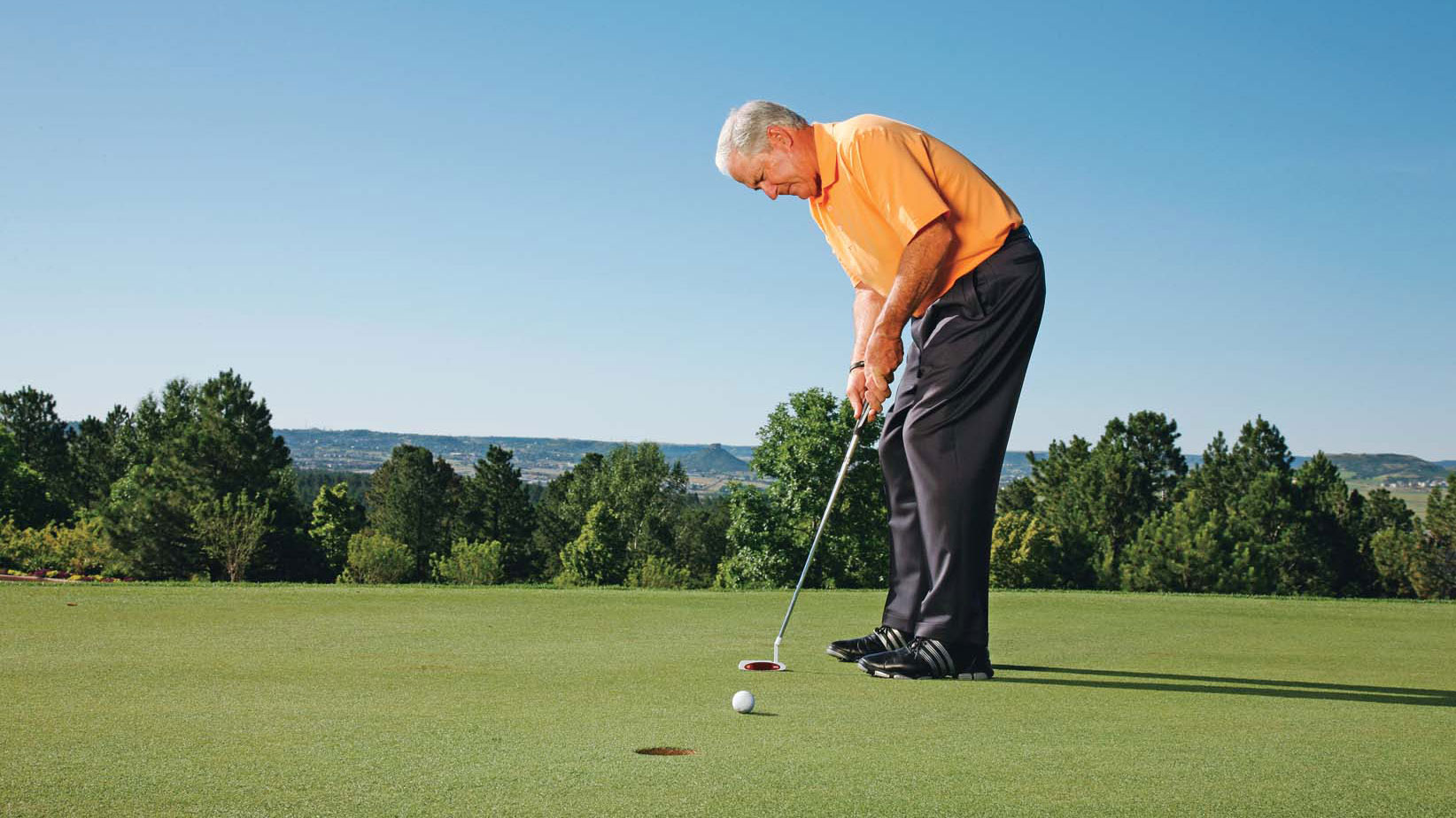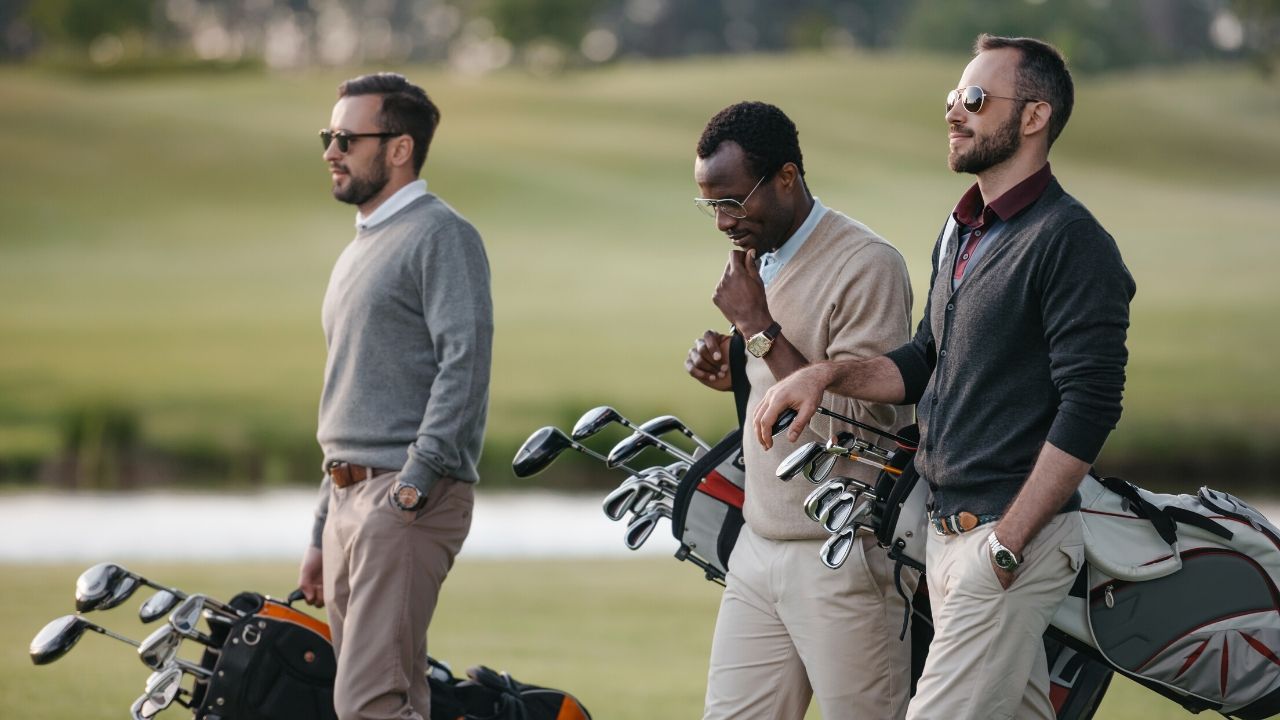
A good golf swing starts with the hands being free. This article will show you how your hands can affect your golf swing. It also shows you how to position the hands during the downswing. This article will also discuss the effects of grip pressure, and how to achieve low takeaways using quiet hands. These are some things you can do to improve your golf swing.
The golf swing requires that the hands be free from tension.
The release of the hands when you attempt to hit a golf club is one of most critical parts of the swing. As the clubhead moves around your hands in the downswing motion, your wrists must release to ensure a strong follow-through. Before making contact with the ball, a good ball-striker will straighten their right arm. Poor contact will be caused by a rapid release of the hands.
Another key element of the golf swing is the natural rolling of your hands. Top golfers will usually have their tophand at the top of their grip when they swing backwards, and their bottomhand closer to the target when they swing downwards. After impact, the hands will change positions to allow for a stronger swing. A lower head position helps to increase the clubhead speed.

Positioning of the hands during the downswing
The majority of amateur golfers do not use their upper bodies in the downswing. Most amateur golfers start the swing with their upper bodies rather than their lower. This is an error that can result in significant power loss. The right arm acts as the "speedarm" in the golf swing, and transfers momentum from its backswing. The proper position of your hands in the downswing will ensure you square the club face before impact.
It is essential to properly position the hands for the downswing when playing golf. This is the only connection between the club & the ball. It is important to position your hands correctly during the downswing. Learn how to do this and your golf swing will improve dramatically. Continue reading to learn about proper hand placement, and how to make the most out of this important part of your golf swing.
Hands and grip pressure in golf swing
Grip Pressure on Your Hands in Golf Swing. You should make sure that your hands are securely gripped and your hands don't slip. This is the equivalent to the Goldilocks story with the three bears. Too loose grips can cause the club to twist when it's hit. And too tight grips will prevent you from properly swinging the club.
To determine the amount of pressure you should apply to your hands while playing golf, hold a bird. It should be held securely enough to keep it in place, but not too loosely or too rigidly. Another example would be to hold a spotted Owl's egg. These eggs are delicate and should not be held too tightly. The toothpaste analogy also helps to visualize grip.

Takeaway prices are low and you can do it with calm hands
Getting a low takeaway with quiet, silent hands in the golf swing is a fundamental element of the correct golf swing. Many people confuse quiet hands and tempo. However, this is an important part of the golf game. What matters is your hands' performance during the swing. Your shots will be farther and more accurate if they are performed well.
When trying to get a low takeaway in your golf swing with quiet hands, the best place is the downswing. This stage is where the arms and shoulders are passively followed by the hands. This passive movement allows for the lowest takeaway. The hands also play an important role in determining the angle of the wrist during the backswing.
FAQ
What is a handicap?
Sometimes it can be difficult to keep up with your fellow golfers. You might also find that you struggle to score well due to your speed or slowness. You could also hire a caddy to help you carry your bag.
But, beginners should make use of the services offered at your local golf course. They will calculate your handicap based on age, gender, height, weight, strength, and skill level.
Your handicap is then used to calculate your score. Your handicap will indicate which group you fall into. This will help you compete better against other players with similar abilities.
What are the different types?
There are many types of golf courses. Some are designed specifically for beginners, while others cater to experienced players.
Some golf courses can be found near lakes, rivers and mountains. Others can be found in urban settings. You will find everything from public golf courses to private estates.
What is the best way to practice your golf swing?
Practice makes perfect! Any sport needs practice. You have to practice if your goal is to improve your ability to play golf. Practice until you become comfortable with the basic mechanics of the swing.
You should practice using both hands. First, practice with shorter shots. Next, practice longer drives. Next, practice chipping or putting.
Statistics
- Professional golfers typically make between 60% and 70% of greens in regulation. (en.wikipedia.org)
- They do this by means of assessing and rating courses according to the average good score of a "bogey golfer," a player with a handicap of around 20. (en.wikipedia.org)
- Professional golfers typically make between 60% and 70% of greens in regulation. (en.wikipedia.org)
- He shanked the first attempt, but it is estimated his second went more than 200 yards (180 m).[52]Golf courses worldwide. Below are the top 20 countries with the most golf courses as of 2019.[53]CountryNumber of (en.wikipedia.org)
External Links
How To
How Do You Play Better Golf When The Wind Is Blowing?
Golf is an outdoor sport played in open spaces and on well-kept grassy fields. It is one of the most popular sports around the globe. There are many kinds of golf courses in the world. They range from public parks and private clubs. Indoors, like indoor arenas and shopping malls, you can also play golf. There are a series holes that players must hit their balls into. Each hole is equipped with a fairway, rough and hazards (e.g. water) The type of shot that is required will determine which driver, wedge or long iron the players use. Players may be required to carry the ball a certain distance before they can hit it. Or, they may just have to drop it in the cup. When playing outdoor golf, various conditions affect how the player hits his/her shots. These include temperature, humidity and visibility.
There are two types of winds: headwinds and crosswinds. Crosswinds blow in the opposite direction to headwinds. If the wind blows towards the golfer, he/she is playing against the wind. However, if the wind blows away from the golfer, he/she will hit with the wind. It is difficult to play in strong wind because the ball will fly further and higher. This makes it harder for the player controlling the ball's trajectory. To overcome these problems, players should keep their club faces perpendicular towards the ground. They strike the ball in such a way as to get maximum power and full contact with it. Even though the ball is less likely to fly in stronger winds, it still travels further due to its increased air resistance.
Golf in the wind is a skill that requires practice. The wind has an effect on the ball's flight path, as mentioned earlier. The area is affected by wind, so a good golfer needs to know this information. He/She would adjust the swing to compensate so that the ball can be hit cleanly and with minimal energy. Another important aspect to consider is where the wind is coming from. Wind does not travel in the same directions. For example, the breeze coming off the ocean is usually very light, but it is often stronger near the shoreline. Similarly, the wind blows strongest close to the ground. Because of these factors, the golfer must pay attention to the wind direction and intensity.
In summary, playing golf in the wind requires constant adjustments to your swing. Watch the wind and ensure that your swing aligns properly. Also, you have to learn how to read the wind and adapt your swing accordingly.